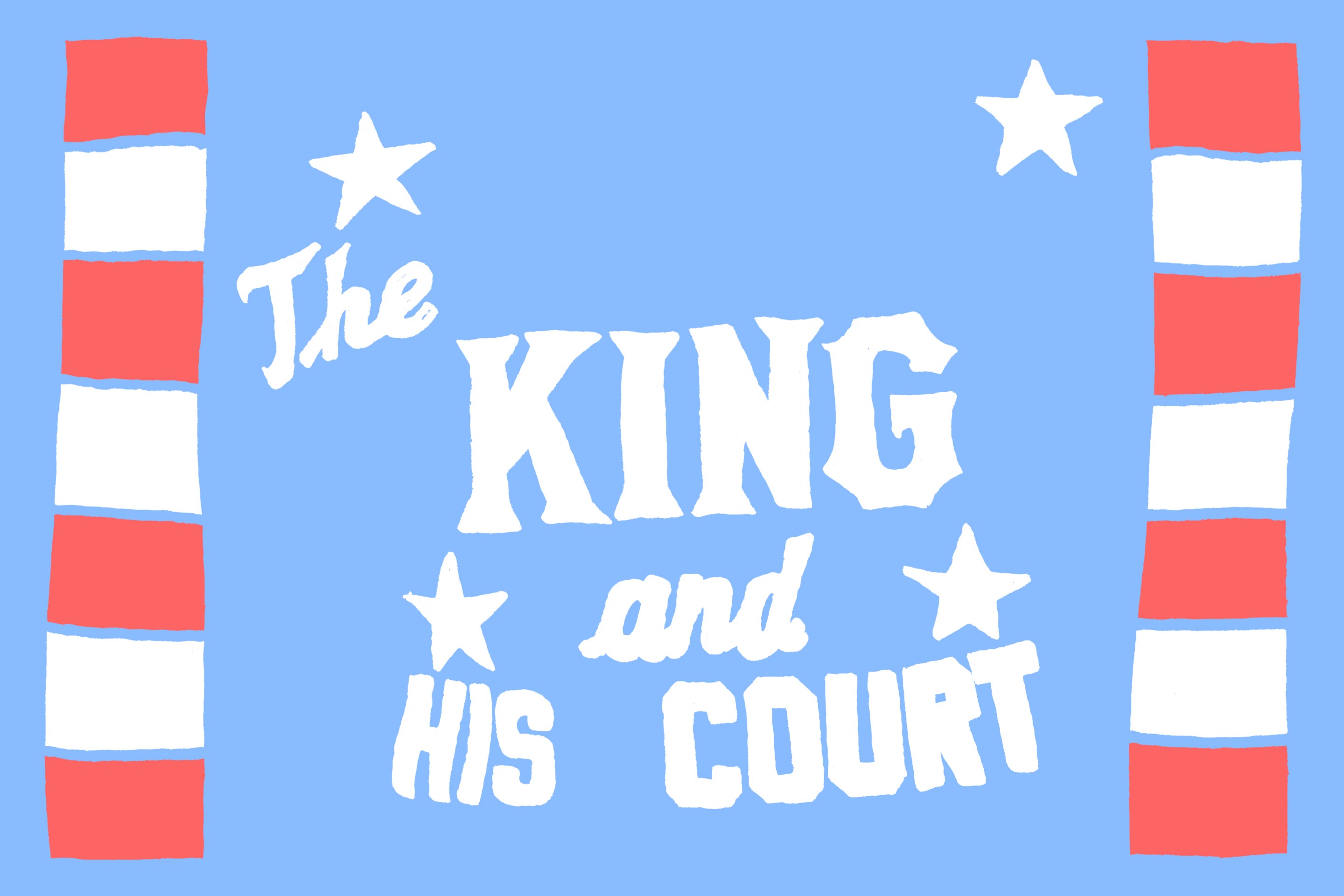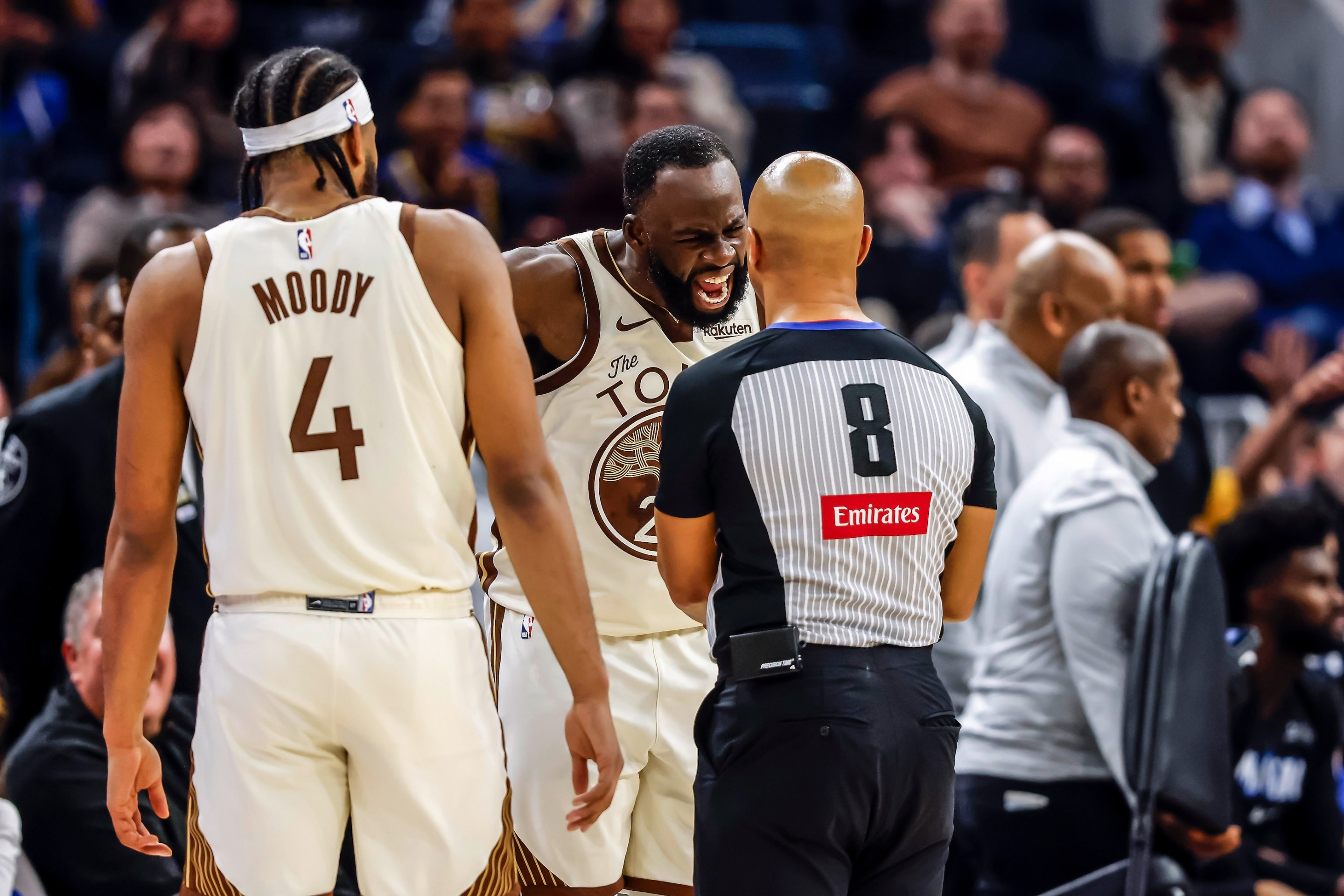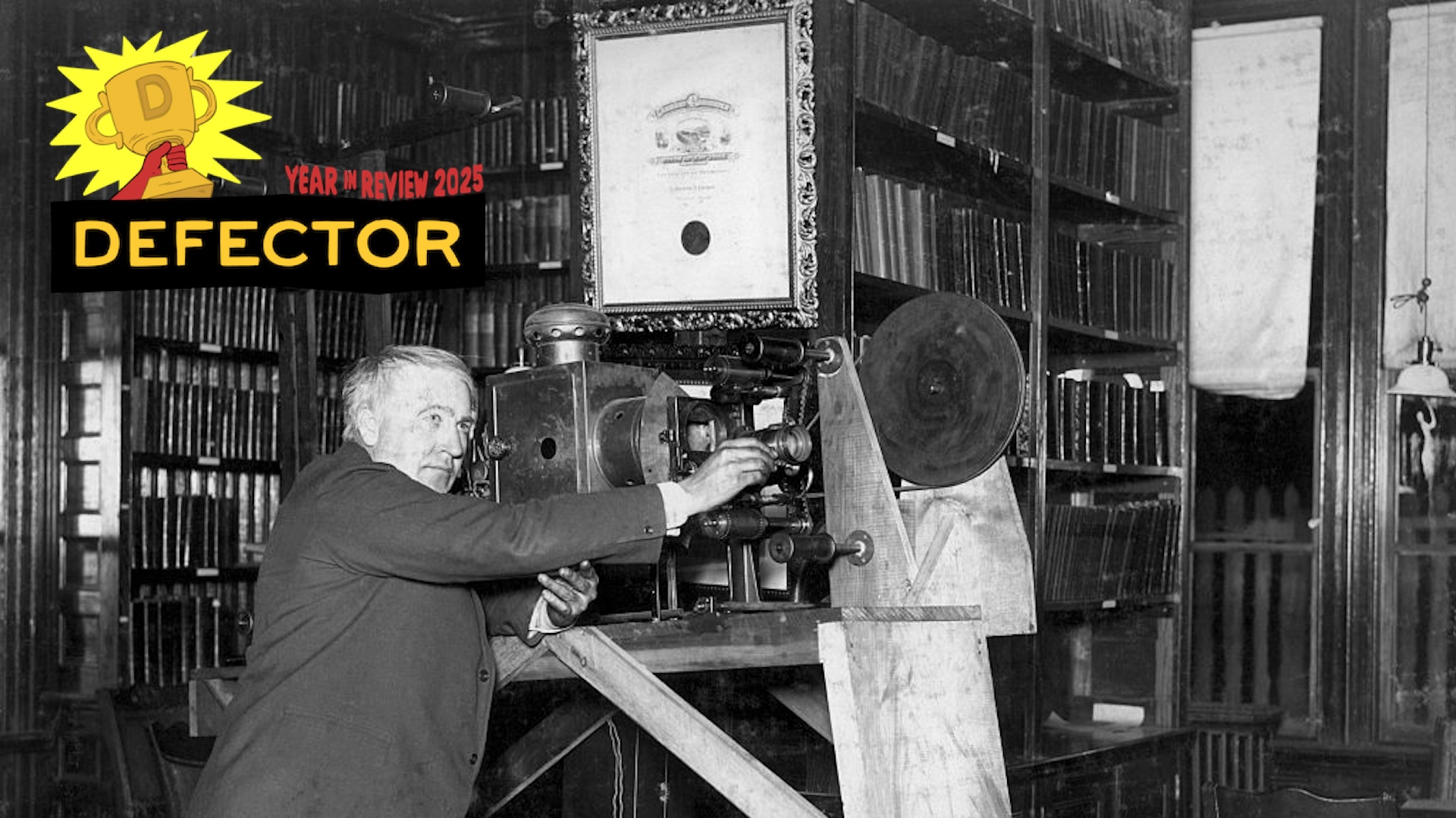This is our monthly cross-post from the Sports Stories newsletter. It’s written by Eric Nusbaum and illustrated by Adam Villacin, and focuses on overlooked or forgotten stories from sports history. We like it very much, and if you’d like to become a subscriber you can do so by signing up here.
There’s a 1999 episode of The Simpsons that I think about sometimes. Bart tries a new ADHD drug and becomes convinced that Major League Baseball is spying on the town of Springfield. Nobody believes him, and he becomes increasingly paranoid before stealing a tank from a military base and using it to shoot down a satellite.
As the town gathers around the burning satellite, they see the MLB logo on it and realize that, wow, Major League Baseball was spying on them for market research. But before they can process this fact, Mark McGwire appears in a black helicopter carrying a baseball bat.
“Young Bart was right,” he says. “We are spying on you pretty much around the clock.”
“But why Mr. McGwire?” asks Bart.
“Do you want to know the terrifying truth?” McGwire answers. “Or do you want to see me sock a few dingers!”
The town, of course, opts for the dingers. Because why wouldn’t they?
This week’s Sports Stories is about Eddie Feigner, an American legend who was born and raised in Walla Walla, Washington, the town so nice they named it twice. But really, he comes from the part of our collective psyche that just wants to see some good old fashioned entertainment; a few dingers from Big Mac, a 50-year-old dude in a shiny uniform striking out chump locals with a 100 mph underhand heater pitched from second base.
Sports, as The Simpsons are not-so-subtly suggesting, might be an opiate of the masses. But that’s not necessarily a bad thing. Sports are also a place people go together. Underneath all the corruption and cynicism and spy satellites operated by Major League Baseball, there is our resilient capacity to be amazed and there is our enduring desire to be amazed together. Eddie Feigner understood this. He spent his life bringing people together and creating transcendent, memorable moments for them.
Feigner was adopted at birth and given the name Myrle Vernon King. It was as Myrle Vernon King that he grew up playing sports, and as Myrle Vernon King that he served in the US Marine Corps. In 1946, after he finished his service, he got into an argument over a softball game back in Walla Walla. Legend has it that after somebody questioned his pitching ability, he said “I would play you with only my catcher, but you would walk us both.”
The result was a challenge. Feigner added two more players: enough that even with the bases loaded, his team would always have somebody available to bat. The 4-man softball team named itself the King and His Court. Then they proceeded to dominate their opponents, with Feigner throwing a perfect game. After that, they got the idea that this could be bigger than a single game. Myrle Vernon King became Eddie Feigner (after a buddy named Eddie and his adopted mom’s maiden name), or simply The King.
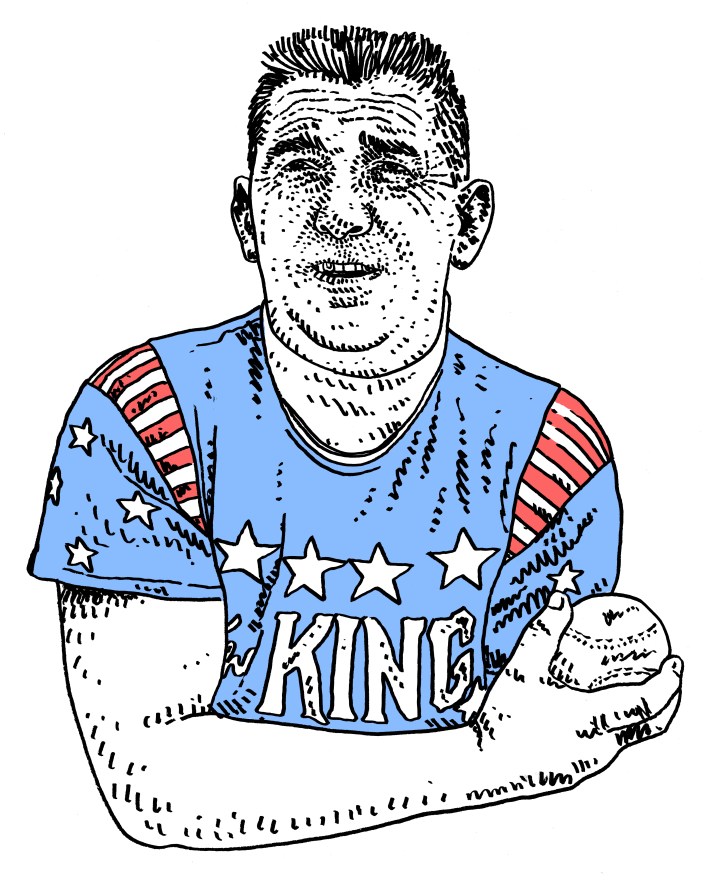
The King and His Court were a novelty from the beginning: a four-man softball team that toured the world and took on all comers. They wore patriotic-looking uniforms and blended vaudeville bits into their ballgames. Feigner had an exaggerated windup and he would do things like pitch blindfolded, or pitch an inning from behind second base. He could comfortably fire unhittable strikes around his back or through his legs.
Think of the King and his Court as sort of like the Harlem Globetrotters but for softball. They were roving troubadours, riding in their van from town to town, putting on a show, and then moving on. The cast of characters around Feigner would change, but the result would be more or less the same. The games weren’t fixed, but Feigner and his squad nearly always won. Usually they played against local teams that were simply overmatched.
When a local team did win, it was big news. For example, in 1969, a club in Bradford, Pennsylvania defeated the King and His Court 1-0 in front of a crowd of 1,200 people. The only run came on an inside-the-park homer that would have been a single had there been any outfielders on Feigner’s team. The game was big enough news that it earned a write-up in the local paper at the time, then a retrospective on its 50th anniversary.
“It was very challenging to bat against him,” said Bill Manning, who played on that Bradford team, in an interview with the Old Town Herald. “I just (foul) tipped one off. He struck just about everybody out. He was really something. He was something to behold.”
“You’d be waiting for that fastball, then he’d throw a change-up,” Manning said. “He was just phenomenal. I bet you it was over 100 mph… You’d find the ball and the umpire had already called a strike.”
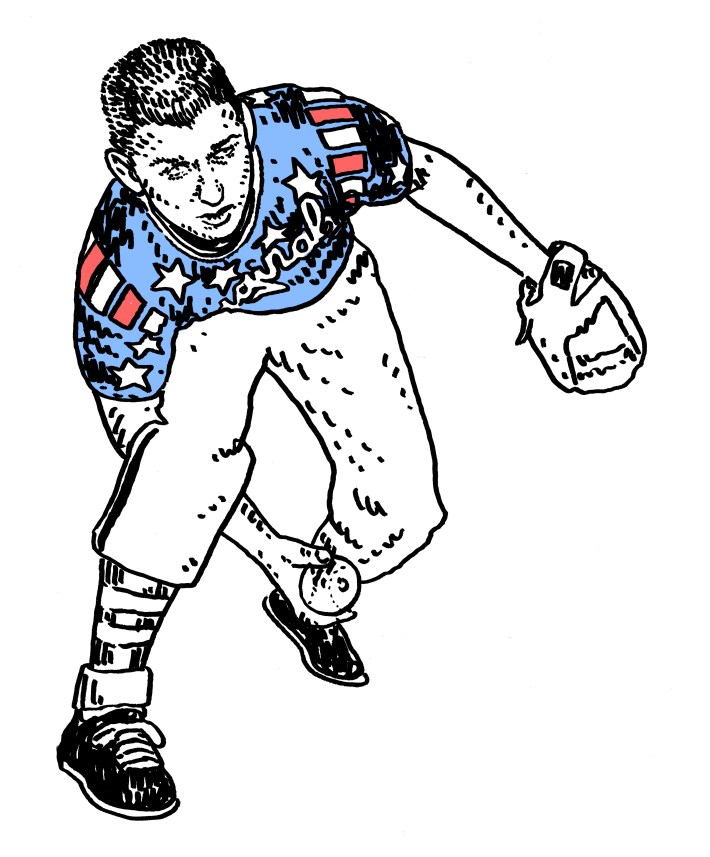
Feigner was a legitimately spectacular pitcher. In addition to throwing a fastball clocked at 104 mph and entertaining families around the world with his banter, he could make the ball spin and drop in a way that was, fittingly, cartoonish. His stats, which he supposedly kept detailed records of, are also cartoonish: 9,743 victories, 141,517 strikeouts, and 230 perfect games. He played before more than 20 million fans in 4,405 cities across 105 countries. He also put on thousands of free clinics. Feigner claimed he performed at more USO events than Bob Hope.
At each stop, he sold t-shirts, hats, and even self-published guides on how to play softball like the King. Feigner pitched through more than five decades. During his career, he spoke frequently about his desire for softball to be recognized as an Olympic sport. It finally happened in 1996. Four years later, at the Olympics in Sydney, Feigner threw out the honorary first pitch before the first game of the women’s softball tournament. The following day, Feigner suffered a stroke that would end his playing career.
For the next few years, Feigner continued to barnstorm with His Court, serving as an emcee. He passed away in 2007 at the age of 81.
Related Reading:
By far my favorite read on Eddie Feigner is this portrait from the Washington Post by John Ed Bradley. Bradley is one of my favorite (relatively unsung) magazine writers and also the author of a great memoir about his days playing football at Louisiana State University called “It Never Rains in Tiger Stadium.” Anyway, here he is describing Feigner in 1983:
After a quick inning of throwing smoke to the Rockville Jaycee misfits, Eddie Feigner stands near the row of aluminum chairs on the third base line and sips from a can of orange soda, calculating three more strikeouts, three more innings.
The King of the King and His Court is 58 years old, 20 pounds overweight ("By the end of my tour, I'll be a good 10 pounds under, though; gaunt, kinda frail-like with circles under my eyes, then I'll start eating big time again . . . ") and sweating like a caged hog in his stars-and-stripes-forever softball suit.
A cold brewski would do him good now. Pretty soon, it'll be dark, time to throw his headlights on the freeway and let the road find another team of good old boys to mow down. Feigner, considered perhaps the greatest pitcher in fast-pitch softball, has been doing these exhibitions around the country for decades.
Then go ahead and read Feigner’s New York Times obituary. Round it out afterward with a look at his website, where the keepers of his legacy are working to get a documentary made about him. (This is a documentary the Sports Stories team would love to watch or even help make.)
Celebrities!
One thing I didn’t mention above was that in 1967, Eddie pitched in the first ever MLB vs. Celebrity Softball Game. The game, held at Dodger Stadium, was pretty outrageous. It featured the best of baseball against the likes of Woody Allen, Bobby Darin, James Garner, Peter Falk, Robert Loggia, etc. The broadcasters were Vin Scully and Jerry Lewis.
Feigner comes in out of the bullpen at select moments as a ringer for the celebrity team. He proceeds to strike out Willie Mays, Harmon Killebrew, Willie McCovey, Roberto Clemente, Maury Wills, and Brooks Robinson. The whole thing is a trip:
